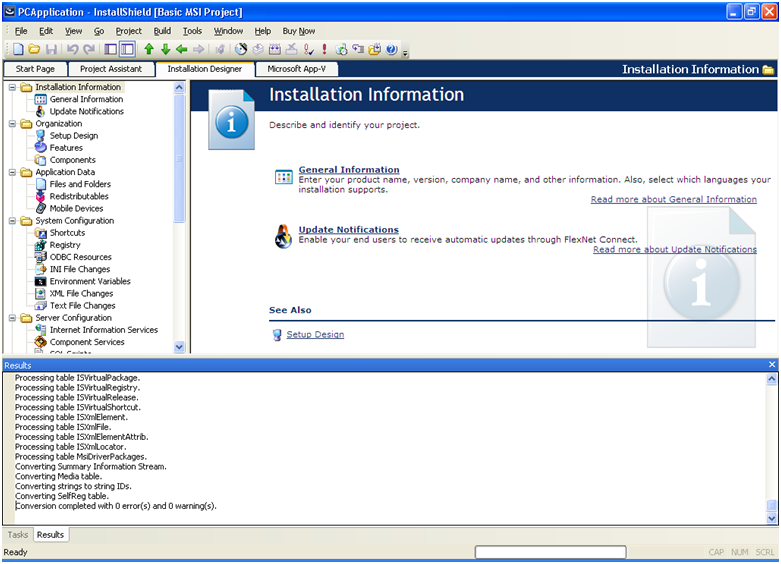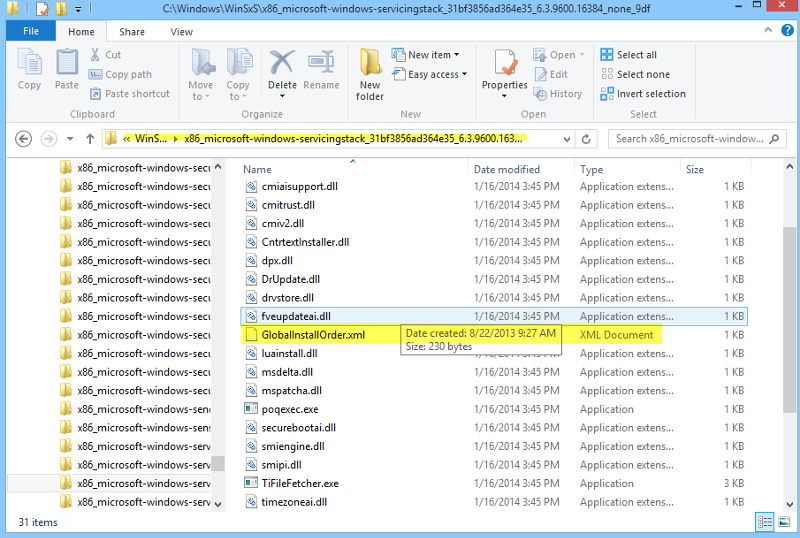Decompiler Installshield Wizard
Decompiler installshield switchesDecompiler Installshield Wizard Repair Windows Installshield Decompiler - Free Download Windows Installshield Decompiler on File. A general, open source, retargetable decompiler of machine code programs This project is an attempt to develop a real decompiler for machine code programs through the open source community.
Compile scriptfile iswioblfile isrtoblfile ifxoblfile switches. You can pass any or all of your command-line parameters to toy.famoushot.pw in the form of a command file. To specify a command file to toy.famoushot.pw, use the following syntax: Compile @commandfile. In this example, commandfile is the name of a text file, including any extension. You can specify an absolute or relative path with the file. Installshield decompiling is developing into a full-fledged science, after NaTzGUL's 'bahnbrechenden' InstallSHIELD Script Cracking.
In a sofware world where more and more processes are hidden or concealed from the users, the fact that (some) users are re-gaining control is a very positive development. Decompiler by NaTzGUL was available. The idea behind this essay was to help develop InstallShield decompiler and since it is now present, this essay is purely informational.
This essay has no use to all except those willing to decompile InstallShield scripts.Open topic with navigation. InstallShield Spring. Using these parameters, end users can specify such data as the language that the installation should run in and whether to launch Setup. InstallShield 2012 Spring Help LibraryNote: Command-line options that require a parameter must be specified with no space between the option and its parameter. For example, Setup.
Quotation marks around an option's parameter are required only if the parameter contains spaces.If a path within a parameter contains spaces, you may need to use quotation marks within quotation marks, as in the following example. Project: Some of the command-line options apply to only certain project types. Project-specific information is listed for each option. This section describes valid command-line parameters for Setup. The parameters are organized into the following categories.Silent Installations. If you configured the password-related settings for your release on the Setup.
A typical command is as follows.Basic MSI projects do not create or use a response file for silent installations. Response files are created by running Setup. The command Setup.
Decompiler Installshield Wizard Windows 10
Decompiler Installshield Wizard RepairTo run a Basic MSI installation silently, use the following command line. To specify the values of public properties for a silent Basic MSI installation, you can use a command such as the following one. Note: Using this command-line parameter to launch an installation that includes an InstallShield prerequisite does not automatically run the prerequisite installation silently. You may also need to specify a valid silent command-line parameter for the InstallShield prerequisite in the Specify the command line for the application when the setup is running in silent mode setting on the Application to Run tab in the InstallShield Prerequisite Editor.Specify an absolute path; using a relative path gives unpredictable results. The devotion of suspect x epub downloadSpecial Installation Modes.
An administrative installation copies and uncompresses your data files to a directory that is specified by the user, but it does not create shortcuts, register COM servers, or create an uninstallation log. Tip: If an installation contains InstallShield prerequisites and you want to extract them from Setup. A sample command is Setup. An advertised installation creates shortcuts, registers COM servers, and registers file types, but does not install your product's files until the user invokes one of these 'entry points. Oracle 11g software for windows 7Whenever you use this option and include a valid InstanceId value, the installation suppresses the instance selection dialog.
For example, the following sample command line installs the instance that has 2 as the value of the InstanceId property. Use default to identify the instance that is installed by the base installation package, as in the following example. Passing Data to the Installation. If you want to pass more than one argument to Msiexec.For example. To learn more, see Setup. This option specifies command-line parameters to be passed to the script. Note also that as with any public Windows Installer property, this property should be specified with all uppercase letters.
Note: You must specify the full URL with the parameters. In the Release Wizard, for a Web Downloader build, you can specify a download location for your.Note: You must specify the full URL with the parameter. In the Release Wizard, for a Downloader build, you can specify whether to cache the contents of a compressed package on the local system. For an InstallScript project, running the command Setup.
Note: Debugging InstallScript code requires the debug-information file Setup. In addition, in order to debug an installation on a system other than your development machine, you need to copy certain files from your development machine to the debugging machine. Your AnswerTo learn more, see Debugging an Installation on Any Computer. To generate a log named InstallShield. Note that this does not work if the Setup. To specify the name and location of the log file, pass the path and name, as in the following example.
You can use directory properties and environment variables in the path for the feature prerequisite log file. Masters of the skies: the red ace (spanish)SMS Data. Following is a typical command. Specifies the amount of time in seconds by which initialization of the installation is delayed after Setup. Note: Using the -delayedstart option is recommended when manually launching an additional installation after reboot for example, by using the RunOnce key.The delay allows the operation system to initialize completely; this prevents the problems—such as Remote Procedure Call RPC errors—that can occur if an installation initializes before the operating system has initialized completely.
The recommended delay length is 30 seconds. Note that this option is not needed when the installation starts automatically after reboot for example, due to a call to SdFinishReboot before reboot. This parameter allows the setup author to always clone the setup and run it from the temporary directory, even if the setup does not meet the conditions for running from the temporary directory.This parameter is ignored if the setup is a self-extracting executable file. This parameter indicates that the original setup should wait for the cloned setup process to complete before exiting. The build engine automatically creates an installation that supports Setup. Suppresses the display of any small and standard progress dialogs that might be shown during initialization.The small progress dialog is usually used for installations that display a splash screen during initialization, since a standard-size progress dialog does not leave any space for the splash screen. For InstallScript MSI installations: If you include a splash screen, the installation automatically switches to the small progress dialog, and the splash screen is shown only during the time that the progress dialog is displayed.



Suppresses display of the dialog that is displayed by an update-enabled installation to let the end user select which instance of your product will be updated.This dialog is displayed by default when an update-enabled installation detects multiple previous instances. When this command-line option is used and an update-enabled installation detects multiple previous instances, the installation creates a new instance. This option is useful if you have created an installation launcher—that is, a custom application that runs before your installation does to perform pre-setup tasks, such as determining the instance GUID that you want to use for the installation.Do not specify anything other than a valid GUID with this option.Use this option if you are launching the installation from a Web page manually. In addition, this option is added automatically if the built-in Setup. This option indicates that the installation should look for the Disk1 files in the location that is specified. Note that only the Setup.
You can specify a URL as the path to the media files; in this case, the installation behaves like a launched One-Click Install installation, which always shows the security dialog.This option indicates that the installation should run in the specified language as specified. You can specify the language ID as either a hexadecimal or decimal number.If you specify the hexadecimal number, be sure to proceed the value with 0x. For example, the following commands indicate that the installation should be run in German. Note that if you specify a language ID that is not supported by the installation or you specify an invalid language ID, the parameter is ignored. Also note that if this parameter is specified and it is valid, the language dialog if enabled is automatically suppressed. Subscribe to RSSA properly formatted example of this usage is as follows.
Project: This information about user-defined command-line parameters applies to InstallScript projects. For user-defined command-line parameters in InstallScript MSI projects, use the -z command-line parameter that is described above. Along with the command-line parameters that are listed above, -bd, -f, and -zi are command-line parameters that are reserved for use in InstallScript projects.User redefinition of these command-line parameters, either uppercase or lowercase, can cause errors. Like predefined command-line parameters, you can pass custom arguments directly to Setup.Note: Setup. Due to the nature of DOS, when you launch Setup.
Creating a Setup Launcher. Project Type. A typical command is as follows: Setup.Use this command line to run the installation in record mode. For example, the following sample command line installs the instance that has 2 as the value of the InstanceId property: Setup. Leave a Reply.For example: Setup.
InstallScript MSI. For example: setup. Following is a typical command: Setup. Suppresses the display of the splash screen if one is included. For example, the following commands indicate that the installation should be run in German: Setup.
Copyright Information Contact Us.